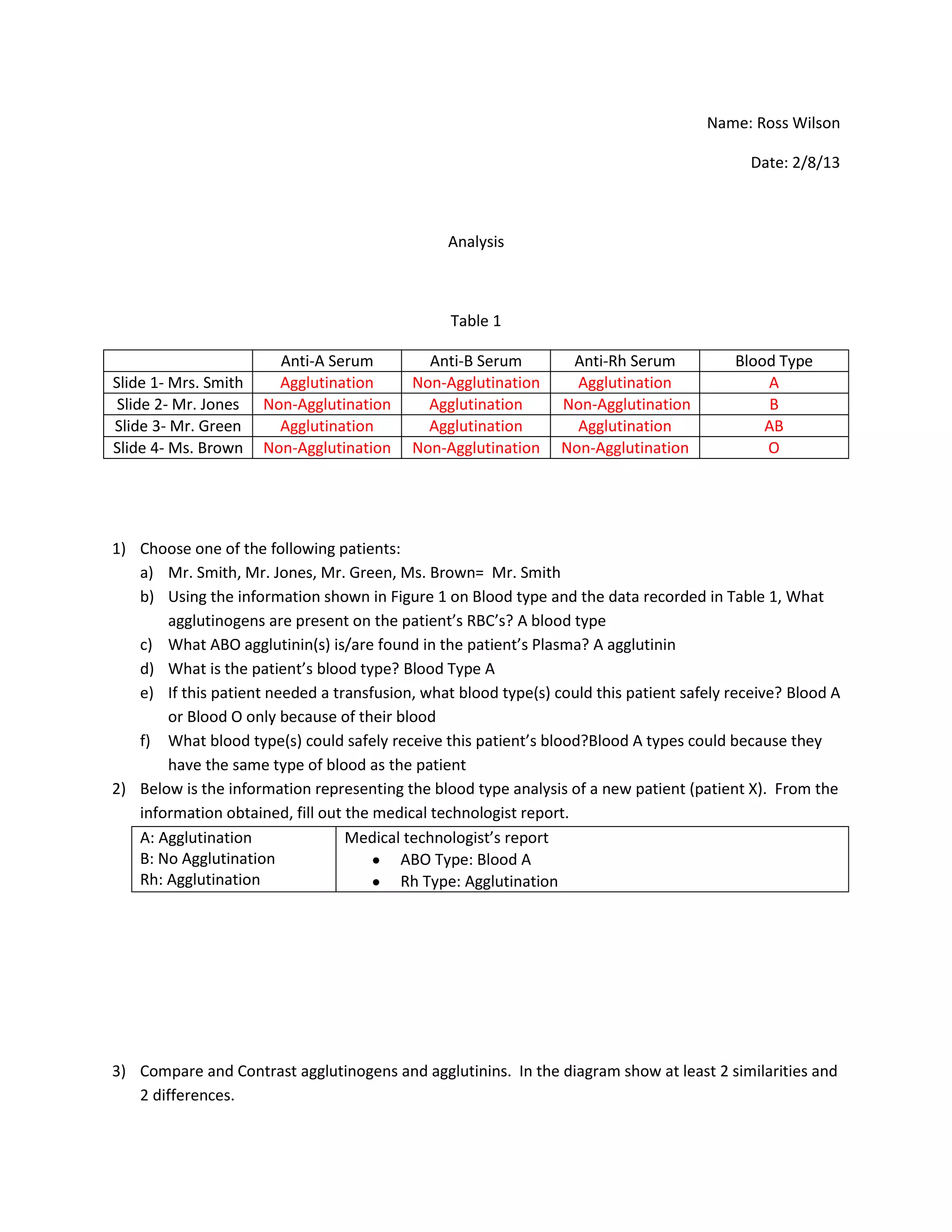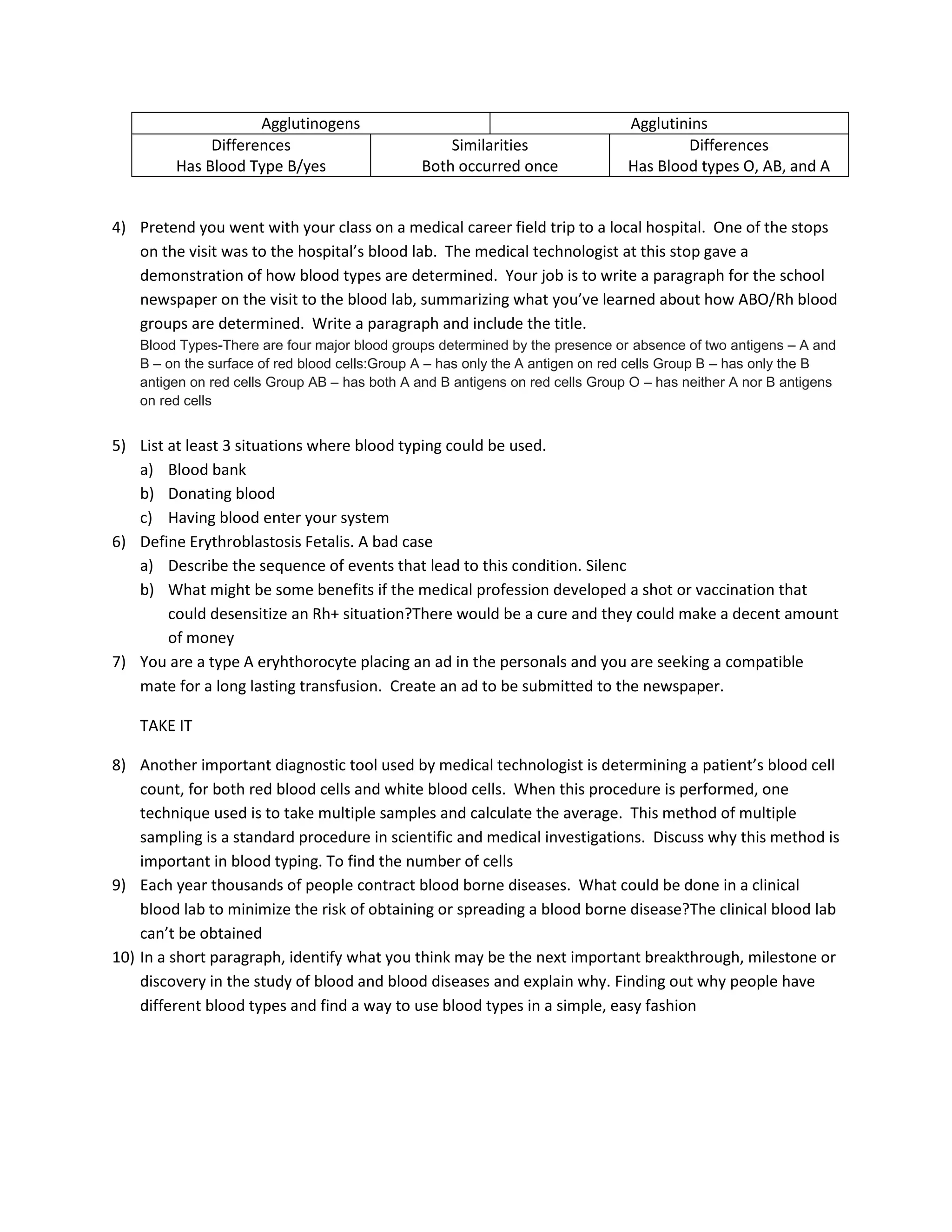This document analyzes blood typing results for 4 patients. It identifies Mrs. Smith as blood type A based on her agglutination with anti-A and anti-Rh sera but not anti-B serum. It also discusses how blood types are determined, the differences between agglutinogens and agglutinins, and asks the student to summarize what they learned about blood typing on a field trip to a hospital blood lab.

